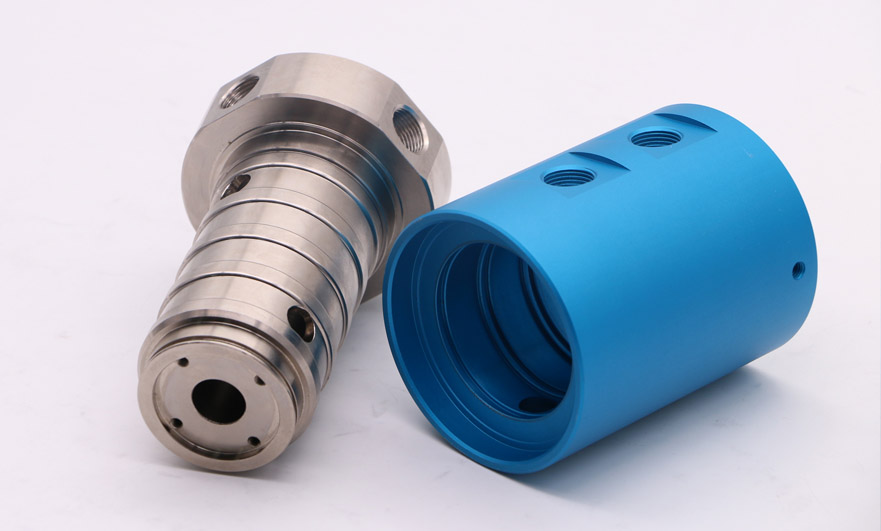15 years one-stop China custom CNC machining parts factory

Hey there I’m VMT Sam!
With 25 years of CNC machining experience we are committed to helping clients overcome 10000 complex part-processing challenges all to contribute to a better life through intelligent manufacturing. Contact us now
 644 |
Published by VMT at Sep 13 2021
644 |
Published by VMT at Sep 13 2021
Generally, according to the properties of stainless steel materials, ordinary stainless steels are divided into three types: austenitic stainless steel, ferritic stainless steel, and martensitic stainless steel. For specific needs and purposes, duplex steels, precipitation hardening stainless steels, and high-alloy steels with an iron content of less than 50% have been produced. This article mainly discusses the passivation of stainless steel machining parts.
Why do stainless steel parts need passivation?
Want to know why the stainless steel processing parts need passivation treatment? We must first understand what is meant by passivation of stainless steel machining parts. Stainless steel passivation treatment is to allow the surface of stainless steel to react with passivating agent to form a stable passivation film, thereby protecting the stainless steel material from oxidizing corrosion and causing rust.
Stainless steel has relatively good rust resistance, but in coastal areas or in contact with some acid and alkali chemicals, the generated chloride ions can easily penetrate the passive film of stainless steel. Stainless steel will gradually corrode and rust over time, so Stainless steel processing parts need to be passivated. The stainless steel processed parts after passivation treatment can increase the time of 3-8 years on the basis of the original rust prevention, which greatly reduces the chance of stainless steel rusting.

Classification of stainless steel materials
1. Ferritic stainless steel processing material: The matrix is mainly made of ferrite structure (a phase) with body-centered cubic crystal structure, which is magnetic and generally cannot be hardened by heat treatment, but cold treatment can make it slightly strengthened. The American Iron and Steel Institute is marked with 430 and 446.
2. Austenite-ferritic (duplex) stainless steel processing material: the matrix has both austenite and ferrite two-phase structure, and the lesser matrix content is generally more than 15%, which is magnetic and can be cold processed Reinforced stainless steel, 329 is a typical duplex stainless steel. Compared with austenitic stainless steel, dual-phase steel has higher strength, and its ability to resist intergranular corrosion and chloride stress corrosion and pitting corrosion is significantly improved.
3. Precipitation hardening stainless steel processing material: the matrix is austenite or martensite, and the hardened stainless steel can be treated by precipitation hardening. The American Iron and Steel Institute uses numbers in the 600 series, such as 630, or 17-4PH.
4. Austenitic stainless steel processing material: the matrix is mainly austenitic structure (CY phase) with a face-centered cubic crystal structure, non-magnetic, and mainly strengthened by cold working (which may lead to certain magnetic properties). The American Iron and Steel Institute uses numbers in the 200 and 300 series.
5. Martensitic stainless steel processing material: the matrix is ??a martensite structure (body-centered cubic or cubic), with magnetic properties, and the mechanical properties of the stainless steel can be adjusted by heat treatment. The American Iron and Steel Institute is represented by the numbers 410, 420, and 440. Martensite has an austenite structure at high temperatures. When it is cooled to room temperature at an appropriate speed, the austenite structure can become martensite (ie, quenched).
Passivation treatment of stainless steel machined parts
If your stainless steel machined parts do not want to be painted surface treatment, passivation is a good choice. Below we introduce the passivation method of stainless steel processing parts.
1. Stainless steel pickling
The main purpose of pickling is to remove the oxide film produced by stainless steel through high-temperature operations (such as heat treatment, welding, forging, casting, etc.) to expose the original surface of the stainless steel. Stainless steel processing parts have different shapes and specifications, and sometimes different pickling methods are required, such as dipping, scrubbing, pickling with pickling paste and so on. (According to the material of stainless steel processing parts, pickling liquid is selected. Austenitic stainless steel is better with more aggressive solution pickling effect, while martensitic stainless steel is better with weaker solution pickling effect. Stainless steel processing parts Different shapes and specifications sometimes require different pickling methods.)
The pickling and passivation of stainless steel processing parts include the following steps: acceptance before pickling-degreasing-washing-pickling-washing-removing ash-washing-passivation-washing-neutralization-washing-drying-removing hydrogen.
2. Electrochemical treatment
Use the stainless steel machined parts to be treated as anodes and control the constant potential for anodization, or use the stainless steel machined parts as the cathode first and control the constant potential for cathodic treatment, and then use the stainless steel machined parts as anodes and control the constant potential for anodization. , And continue to change its constant potential for passivation treatment, the electrolyte solution uses HN03. After such treatment, the properties of the passive film on stainless steel are improved, and the corrosion resistance is greatly improved. The pitting critical potential (Eb) is increased by about 1000mV (in 3% NaCl), and the uniform corrosion resistance is improved by three orders of magnitude (in 20%-30% H2S04 at 45°C).
Summarize
I hope this article is helpful to you and better understand why VMT recommends you to passivate stainless steel parts. Greatly improve the corrosion resistance of stainless steel machined parts.
Ready To Start Your Next Project?
Get Instant Quote

Request a Free Quote
Send us a message if you have any questions or request a quote. We will get back to you ASAP!